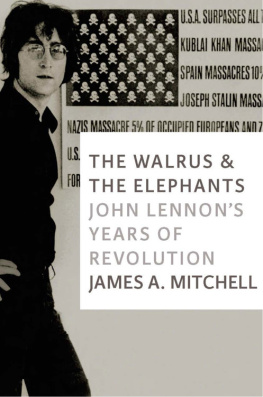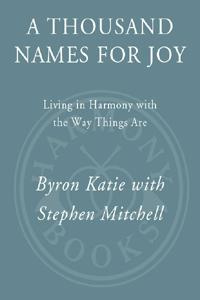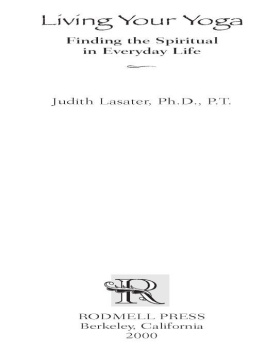John Hanson Mitchell - Living at the End of Time
Here you can read online John Hanson Mitchell - Living at the End of Time full text of the book (entire story) in english for free. Download pdf and epub, get meaning, cover and reviews about this ebook. year: 1990, publisher: UP of New England, genre: Non-fiction. Description of the work, (preface) as well as reviews are available. Best literature library LitArk.com created for fans of good reading and offers a wide selection of genres:
Romance novel
Science fiction
Adventure
Detective
Science
History
Home and family
Prose
Art
Politics
Computer
Non-fiction
Religion
Business
Children
Humor
Choose a favorite category and find really read worthwhile books. Enjoy immersion in the world of imagination, feel the emotions of the characters or learn something new for yourself, make an fascinating discovery.

- Book:Living at the End of Time
- Author:
- Publisher:UP of New England
- Genre:
- Year:1990
- Rating:5 / 5
- Favourites:Add to favourites
- Your mark:
- 100
- 1
- 2
- 3
- 4
- 5
Living at the End of Time: summary, description and annotation
We offer to read an annotation, description, summary or preface (depends on what the author of the book "Living at the End of Time" wrote himself). If you haven't found the necessary information about the book — write in the comments, we will try to find it.
Living at the End of Time — read online for free the complete book (whole text) full work
Below is the text of the book, divided by pages. System saving the place of the last page read, allows you to conveniently read the book "Living at the End of Time" online for free, without having to search again every time where you left off. Put a bookmark, and you can go to the page where you finished reading at any time.
Font size:
Interval:
Bookmark:
Living at the End of Time
ALSO BY JOHN HANSON MITCHELL
Ceremonial Time
A Field Guide to Your Own Back Yard
The Wildest Place on Earth
Walking towards Walden
Trespassing
Following the Sun
The Rose Caf
The Paradise of All These Parts: A Natural History of Boston
The Last of the Bird People
An Eden of Sorts: The Natural History of My Feral Garden
Living at the End of Time
Two Years in a Tiny House
JOHN HANSON MITCHELL
University Press of New England
Hanover and London
University Press of New England
www.upne.com
2014 and 1990 John Hanson Mitchell
All rights reserved
Manufactured in the United States of America
First UPNE edition, 2014
Originally published in 1990 by Houghton Mifflin.
For permission to reproduce any of the material in this book, contact Permissions, University Press of New England, One Court Street, Suite 250, Lebanon NH 03766; or visit www.upne.com
University Press of New England is a member of the Green Press Initiative. The paper used in this book meets their minimum requirement for recycled paper.
Library of Congress Control Number: 2014932194
ISBN for the UPNE edition: 978-1-61168-588-6
ISBN for the EBOOK edition: 978-1-61168-589-3
5 4 3 2 1
For my mother
Contents
Preface to the New Edition
The tiny house in which I lived for two years is still in use, although no longer as a permanent dwelling. Not to give away the end of the book, but a larger house and gardens now occupy the land, along with associated garden sheds, a teahouse, a toolshed, a writing studio, pergolas, and similar small-scale structures, all in the architectural style of the original cottage.
The development of these various follies, the creation of the gardens, and more to the point the square mile of forest and farmland surrounding the property are the subjects of five books collectively known as the Scratch Flat Chronicles. The first in the series, Ceremonial Time, is a fifteen-thousand-year history of this single square mile, which in the nineteenth century was called Scratch Flat. Living at the End of Time is the third book in the chronicles, and in some ways the most intimate, relating as it does my associations with the people who lived in the area and close observations of the immediate surroundings.
All these volumes were written in the little cabin, which has now been in use, for one purpose or another, for more than thirty years. In the pages that follow, the construction of the little house (despite my general incompetence in matters of carpentry) is recounted in full. The book does not mention two later additions to the house.
The first was a small lean-to, attached to the western wall, that served as a tool- and potting shed. A few years after that addition, my brother and I built a long, narrow, open-sided boat shed off the back of the potting shed. We undertook the project in order to house a collection of small boats, including the old kayak that has a walk-on part in Living at the End of Time. The main purpose of the shed, however, was to protect an antique Old Town double-banked rowing canoe, complete with sponsons and a rudder. After a few years, I sold the canoe, and the boat shed became a storage space where junk began to accumulate, alongside firewood for the woodstove in the cottage.
I had laid out a series of gardens around the original cottage and had cleared a small open meadow on the southeast side of the property, as described here. Still, the landscape seemed to call for a more permanent dwelling place. After two years of living without running water or electricity, and heating the house with a woodstove, I decided to rejoin normal society. I built a real house on the property, based on the designs of the nineteenth-century landscape architect and house designer Andrew Jackson Downing. The story of that house and its encircling gardens is told in two books that follow this one, The Wildest Place on Earth and An Eden of Sorts ( 2013 ), which is about the natural history of the gardens.
True to Andrew Jackson Downings landscape theories, the new house would feature even more structures. I built a little teahouse on the south side of the property, to create the focal point so important in traditional garden designs. That done, I started to lay out more alles and garden rooms. In one case a trellis was called for, at least as far I was concerned.
Many of the trees, shrubs, and perennials that make up the gardens I liberated from construction sites. Driving around the countryside in this rapidly developing area, I would often see some perfectly sound house under assault: developers were intent on building in its place a vast mansion, almost any room of which could hold my entire original cottage. In the process, they tore out perennial beds and perfectly healthy ornamental trees and shrubs. While creating the gardens around the main house, I formed the habit of returning to these sites after hours. I carried home azaleas, rhododendrons, dogwoods, and even entire beds worth of thriving peonies and roses, some of which I later learned were antique varieties.
At one of these sites I spotted a large nineteenth-century wooden trellis, lying on its side like a fallen rhino. I returned that night with a friend. We horsed it onto the bed of his truck and headed home with it.
This same friend, a man who cannot bear to see any good outbuilding, boat, flagstone terrace, or other architectural element plowed under, found a modest garden shed one day as he was making his usual circuit in search of salvage material. The shed was about to be torn down. In this case my friend knew the owner and learned the history of his find before carrying it off. The old building, which came from the town of Concord, may have had some association with the cabin of Henry Thoreau: the owner thought the two buildings had been located on the same property for a few years. The shed had been moved several times already and had had many uses. It had even, the owner thought, served as an outhouse. It was a classic tiny house, no more than six by eight feet. My friend rescued it and sold it to me. Together we hauled it down one of the garden alles on rollers and set it in place. I now use it as a writing studio during the warm months.
The last structure on the property was a garage. When I finally decided to add one, I designed it to match the main housecomplete with two gabled bays, and without doors. I purposely left the bays open, to encourage barn swallows. The swallows have yet to appear, but every year a phoebe nests in the rafters.
Shortly after I gave up my Thoreauvian lifestyle to move into the main house, a friend of mine found herself temporarily moneyless and living on her mothers couch. The little cabin seemed sad without an occupant, so I offered to let her stay there. She and her cat moved in. They lived there longer than I did, actually. Interestingly enough, shortly after she moved out, I received an official letter from the local board of health, informing me that according to town bylaws, it was not legal to rent the little house. The fact is, this was a small town; for well over three years my friend had lived there while board officials chose to look the other way. They also must have known that I had lived there without plumbing for a couple of years.
After the publication of Living at the End of Time, assorted pilgrims began arriving at my doorstep to see for themselves what they had read about in the book. For many I seemed to have tapped into some unrealized dream with this project. Presumably they were people living what Henry Thoreau termed lives of quiet desperation. Clearly, the dream of finding a place apart, a place of ones own, still holds appeal.
Next pageFont size:
Interval:
Bookmark:
Similar books «Living at the End of Time»
Look at similar books to Living at the End of Time. We have selected literature similar in name and meaning in the hope of providing readers with more options to find new, interesting, not yet read works.
Discussion, reviews of the book Living at the End of Time and just readers' own opinions. Leave your comments, write what you think about the work, its meaning or the main characters. Specify what exactly you liked and what you didn't like, and why you think so.








